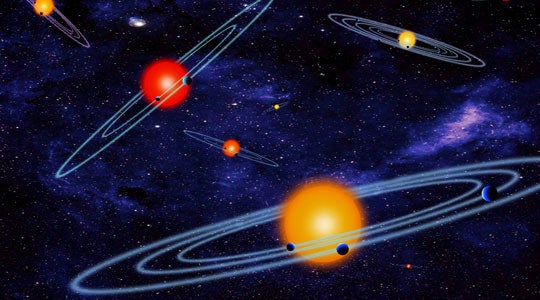“These results are showing us that not only are Earth-sized planets common, but so are multiplanet systems containing potentially habitable worlds,” said Jason Rowe from the SETI Institute. “Most of the new planets orbit their host star much closer than Mercury, but a few are beginning to bear a similarity to our own solar system.”
The deluge of new planets has been intensified by a new analysis scheme called verification by multiplicity. This technique can be applied to many planets at once, allowing the researchers to verify hundreds of new planetary systems in wholesale fashion, rather than teasing them from the Kepler data one-by-one as done in the past. The new technique uses probability arguments based on the recognition that, of the 150,000 stars observed by Kepler, hundreds were found that have multiple planet candidates. On this basis, the researchers are assured that their results are not distorted by binary stars that can mimic a multiworld system. The new discoveries increase the total number of known exoplanets to over 1,700.
“From this work, we’ve also learned that planets in these multiple systems are small, and their orbits are flat and circular, much like our own solar system,” Rowe said.
On April 17, the Kepler team announced the discovery of Kepler-186f, the first Earth-sized planet found in the habitable zone of its host star, marking a major milestone in determining the frequency of Earth-like planets in the Milky Way Galaxy.
“Uncovering these worlds and showing that habitable worlds could be very common has increased the likelihood that there is life — perhaps abundant life — elsewhere in the cosmos,” said David Black from the SETI Institute.
Data collection from the Kepler mission ended in the spring of last year due to the failure of a second onboard reaction wheel, essential to accurate pointing of the telescope. However, on May 20, NASA announced the approval of the K2 mission, which intended to repurpose Kepler to use the pressure of sunlight hitting the side of the spacecraft to act as a third wheel.
“We can’t continue to look at the original Kepler star field,” said Douglas Caldwell from the SETI Institute, “but spacecraft are built and operated by very smart people, and thanks to the hard work of the entire Kepler team, we can now search for planets in a wide variety of environments and conditions, including star forming regions. Doing so will teach us more about how our own planetary system formed and evolved.”
“The more we explore, the more we find worlds among the stars that remind us of home,” Rowe said.










